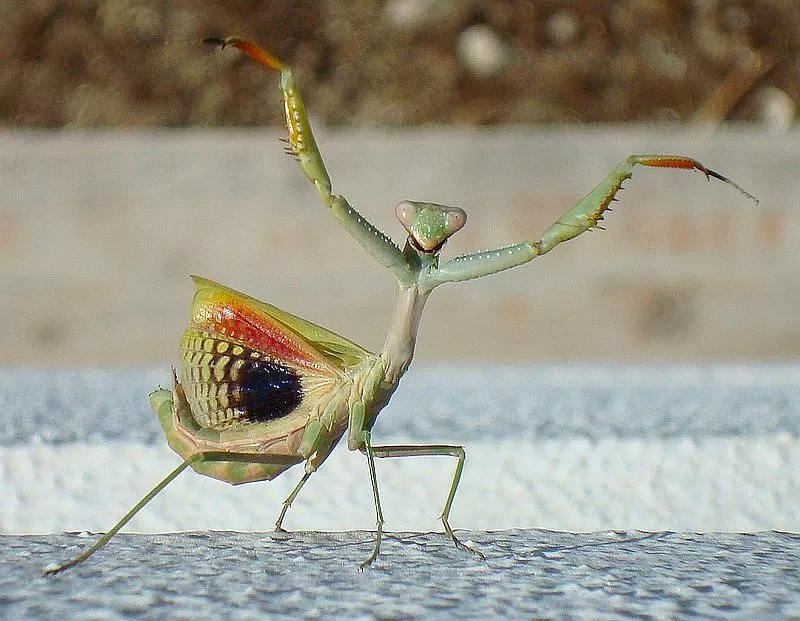- Family: Mantidae
- Scientific: Iris oratoria
- English: Mediterranean Mantis
- Spanish: Mantis mediterránea
Iris oratoria, commonly known as the Mediterranean mantis, is a species of mantis that is native to lands surrounding the Mediterranean Sea. While originally from this area, its range has been expanding to include the Middle East, Western Asia, and even the United States.

One distinguishing feature of the Mediterranean Mantis is the red-orange spot on the ventral side of the fourth abdominal segment, which sets it apart from other mantids that share similar ranges and general size and shape, such as the Mantis religiosa.

As Iris oratoria – Mediterranean Mantis – mantis mediterránea, it changes from being very pale to a grass green color, and grows to a length of about 6.5 centimeters. The cerci, or paired appendages near the end of the abdomen, are also shorter than those of Mantis religiosa.

In terms of reproduction, the Mediterranean Mantis is capable of parthenogenic reproduction when males are scarce, meaning that females are able to produce offspring without mating.
Additionally, the nymphs of Iris oratoria may emerge from their oothecae (egg cases) in the both the first and second year after they are produced.
When the Mediterranean mantis is in danger, it does something called a “deimatic display”, which is made up of a series of actions. The mantis turns around to face the attacker, raises its back by arching it, curls its abdomen upwards, waves its front legs up and down, and raises its wings to show its big, bright eyespots on its hindwings. It also makes a noise by scraping its back wings against its front wings.

More general information and images on Mantises and a list of the species within Iberia here: https://wildsideholidays.co.uk/mantis-in-iberia/
The Caminito del Rey
Find tickets for the Caminito del Rey: https://www.caminodelrey.es/
Wildside Holidays – Spain
Take a trip on the Wildside! Discover the wildlife and nature of Spain, its Natural and National Parks and find the top wildlife, activity and walking holiday companies.
Iberia Nature Forum
Struggling with identifying those bugs and beasties? Why not check out the Iberia nature Forum!
Discover the Iberia Nature Forum – Environment, geography, nature, landscape, climate, culture, history, rural tourism and travel.
I’ve been living in this lovely area of Western Andalucia for the last 20 years or so and dedicate most of my time to the running of English language tourist information websites for the towns of Cádiz, Ronda, Grazalema, the famous or infamous Caminito del Rey, and also Wildside Holidays, which promotes sustainable and eco-friendly businesses running wildlife and walking holidays in Spain. My articles contain affiliate links that will help you reserve a hotel, bus, train or activity in the area. You don’t pay more, but by using them you do support this website. Thankyou!












